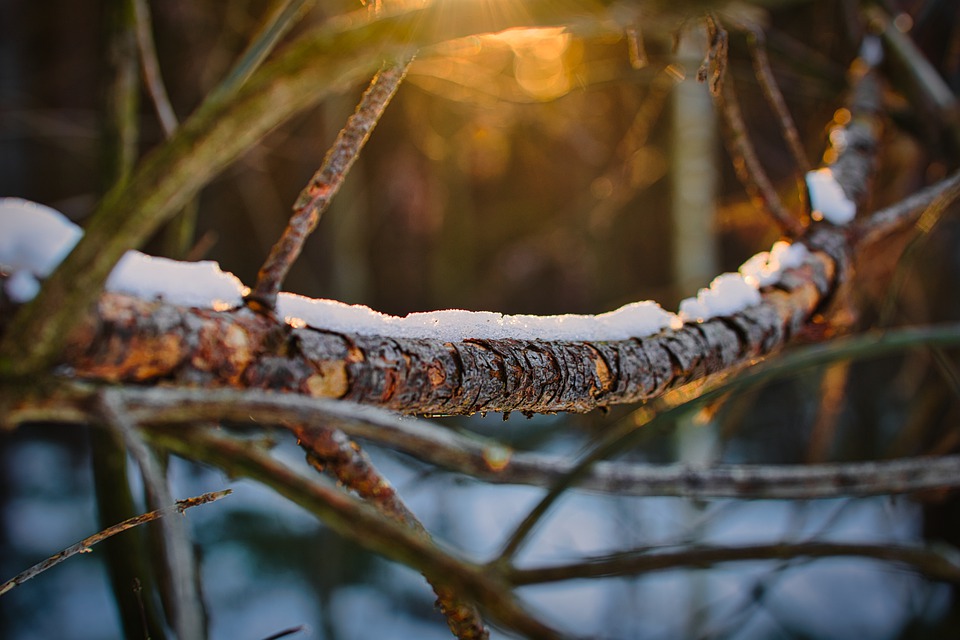Written by Admin and published on https://www.treehugger.com/.
Are you wondering if the tree in your backyard or front yard is dead? Do you have reason to believe that the tree isn’t what it once was? If so, then you’ll want to schedule a removal right away. The experts say, the longer you leave a dead tree up, the more risk is involved. It could invite unwanted pests to your property or damage your house when the branches start falling off. First things first, you need to know how to tell if one is dead. See below for several telltale signs that your tree is dying and needs to be removed right away.
Trees are valuable assets to a landscape. Not only do they provide aesthetics, but these towering plants also offer shade and shelter for wildlife and other plants. Sometimes a dying tree is obvious, with its leaves turning brown in the summer or branches riddled with holes from wood-boring pests. But it’s not always clear when trees are in poor health, which can make it difficult to address especially when a dead or dying tree located near a building or home. Broken limbs from a dying tree can cause injuries to people and pets and have the potential to lead to costly repairs if it lands on your home or car. Keep an eye out for these seven signs that you may have a dying tree so you can take care of it before it does damage to your property.
How to Tell if a Tree Is Dead or Dying
A sick tree can infect the other trees in your yard.
A dying tree in a forest is nature simply running its course and eventually giving back to its ecosystem. A dying tree in a well-landscaped yard, however, can pose problems for other trees and everything else around it.
If you have trees near your home, it’s a good idea to keep an eye on their health and to take action if you think a tree is dying or dead.
But first it’s important to be sure your tree is actually sick. This may seem like common sense, but some trees will exhibit signs of illness as part of their usual seasonal cycles. Kevin Zobrist, a Washington State University extension forestry educator, explains that some trees, like the western red cedar, will temporarily appear sick “due to normal seasonal dieback.” So the first step to identifying if a tree is dying is to identify the tree to make sure it’s not just behaving like it’s supposed to.
It’s also important to remember that not all causes of tree sickness are insect-related. Ailments can be the result of improper planting, diseases and weather-related events, like severe storms, winds and drought.
5 signs your tree may be dying
1. Too much leaning or an otherwise odd shape. According to the International Association of Certified Home Inspectors (InterNACHI), trees leaning 15 degrees away from their original vertical position aren’t doing so well. Trees that were originally straight that are leaning like this are likely the victims of strong winds or root damage. The InterNACHI says that large trees that are leaning due to wind “seldom recover.”
2. Cracks in the tree. These are deep splits in the bark of the tree that can be difficult to identify. Some trees are supposed to have cracks. But deep cracks and gashes can lead to serious issues and “indicate the tree is presently failing,” per the InterNACHI.
3. Trees can get cankers, too. Cankers are deeply unpleasant things for both humans and trees. In the case of our arboreal friends, cankers are areas of dead bark, the result of a bacterial or fungal infection, according to the Tree Care Industry Association (TCIA), a trade group for tree professionals. These infections get inside the tree through an open wound, and the stress of the infection causes the bark to become sunken or fall off the tree. A tree is more likely to break apart near a canker.
4. Wood shows signs of decay. Decay is often hard to spot because it often starts on the inside of the tree, according to TCIA. There are still signs of decay that you can see, however. Mushroom-like spores on the visible roots, stems or branches are clear signs of decay, and cavities where wood is missing also indicate that the tree isn’t healthy.
5. The tree has deadwood. This is exactly what it sounds like: It’s wood that’s dead. When a tree starts dropping branches or limbs, it’s a sign it’s trying to conserve resources by making itself smaller. In addition to being dry and easy to break, deadwood can also be identified by the color of the wood. If it’s bright green, the tree is still healthy. If it’s dull green, it’s dying, and if it’s brown, it’s deadwood. Be sure to test other branches from around the tree as it is possible that only that section of the tree is dying.
Arborists can help
If you don’t feel comfortable making the call regarding your tree’s health, consult the professionals. Agricultural extensions organized through universities can help you determine the state of your tree, and let you know if trees in your county or state are experiencing problems. If you’re not sure how to contact your extension, the National Pesticide Information Center maintains a list of extensions in each state and U.S. territory.
You can also reach out to an arborist, also referred to as a tree surgeon. These individuals can help you determine the health of your tree and if a removal is necessary. If it is, many arborists can help you with that as well.
Original post here https://www.treehugger.com/how-tell-if-tree-dead-or-dying-4863805/.

